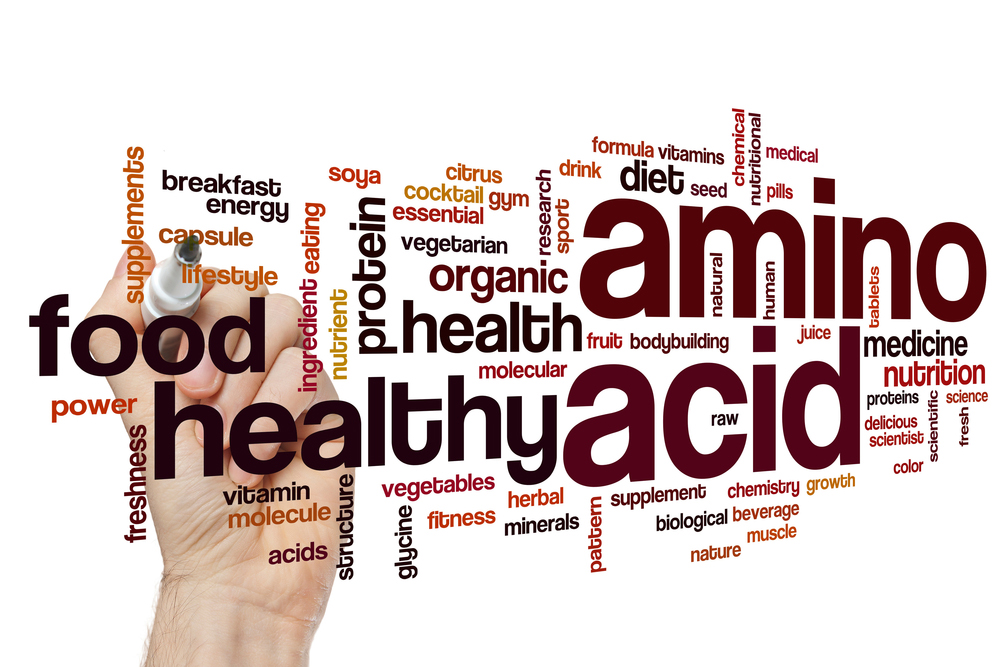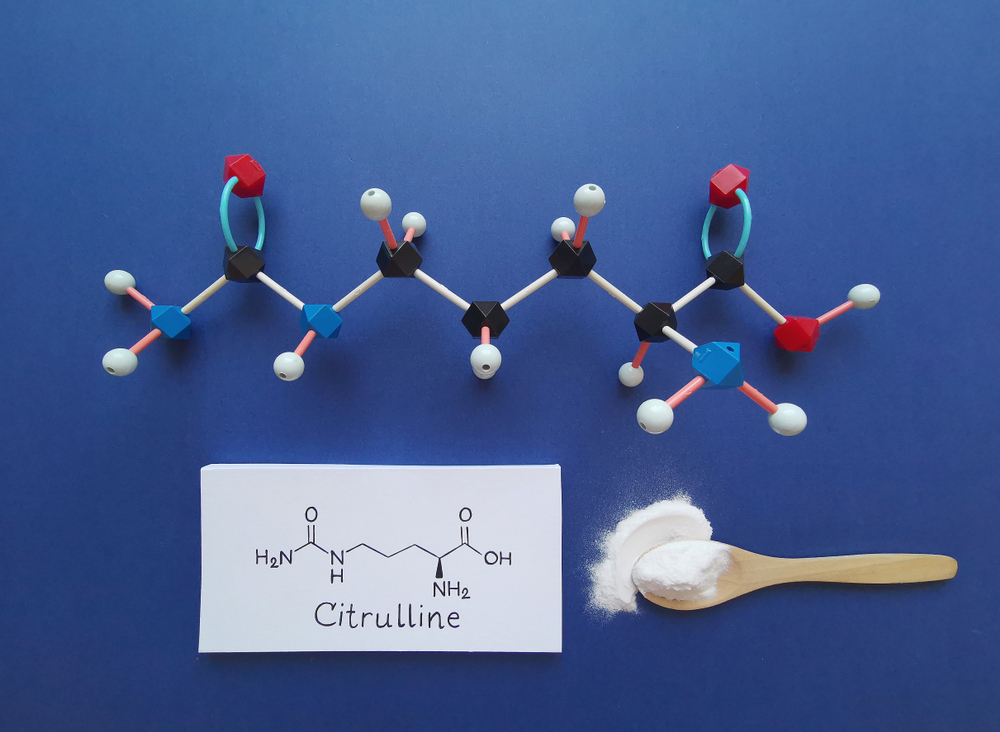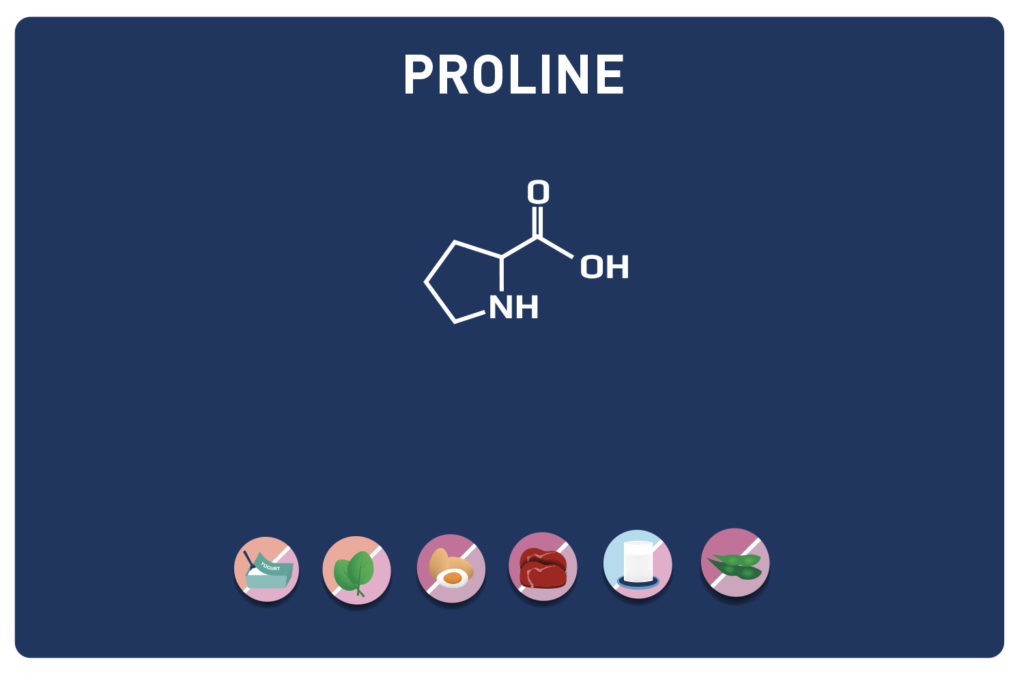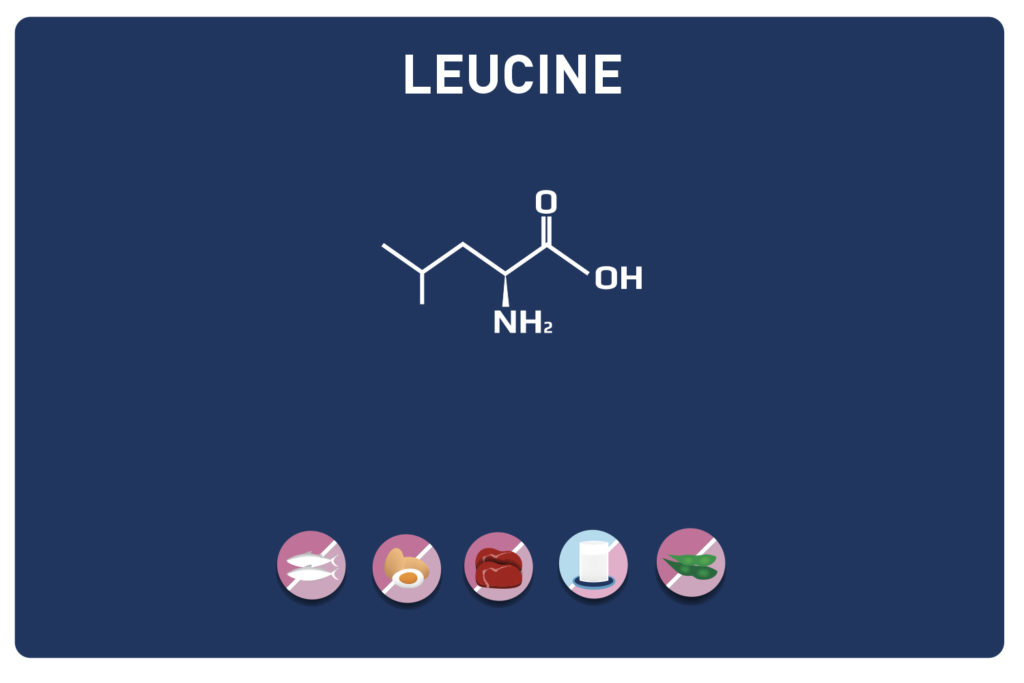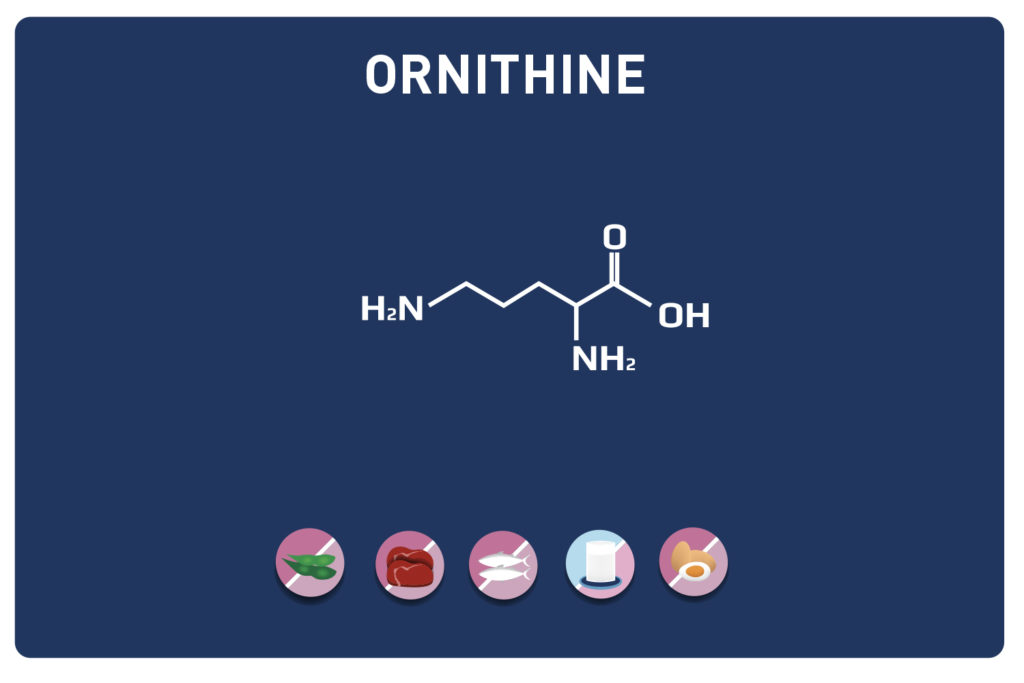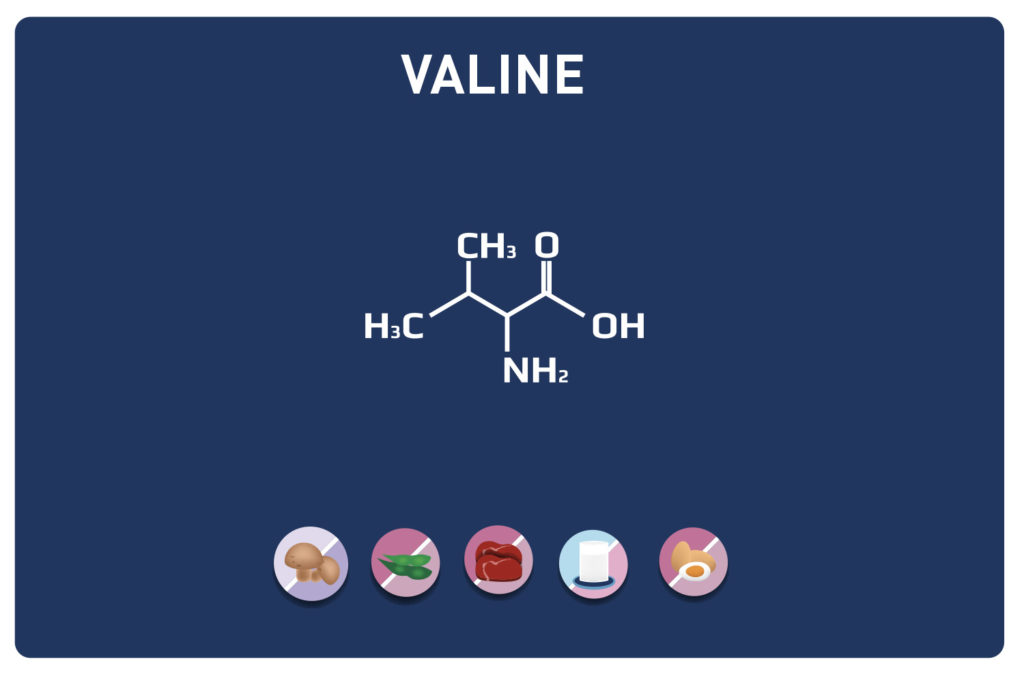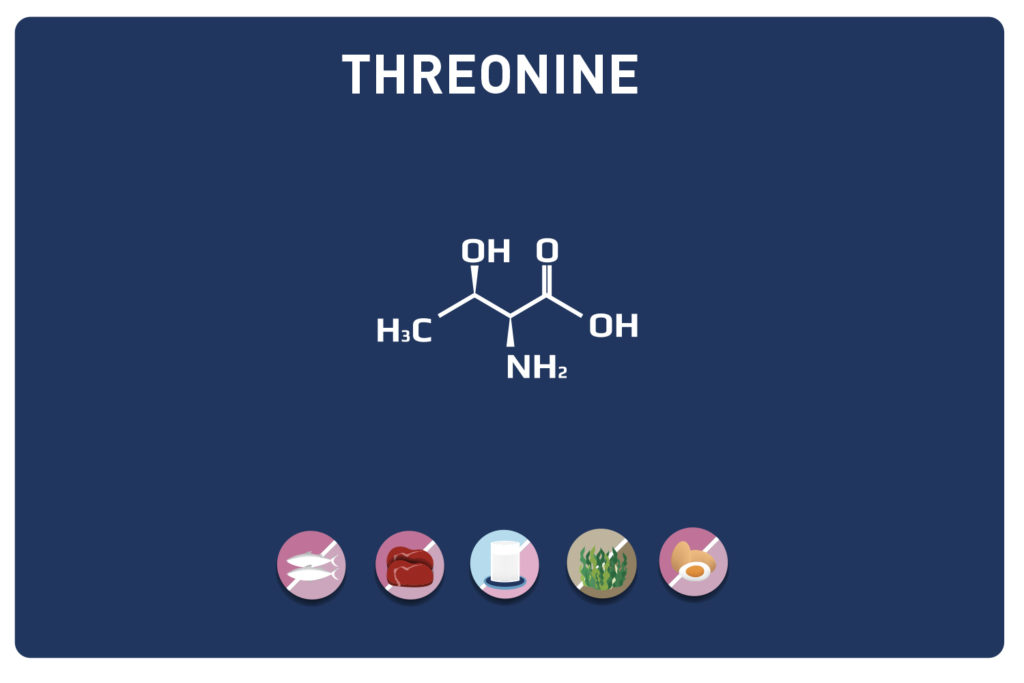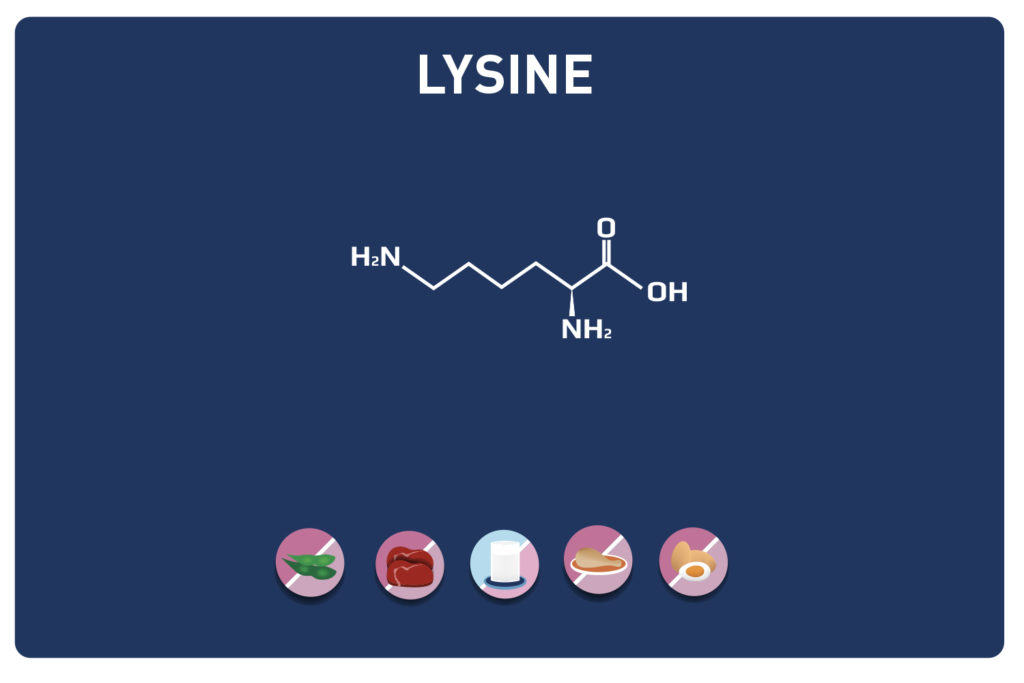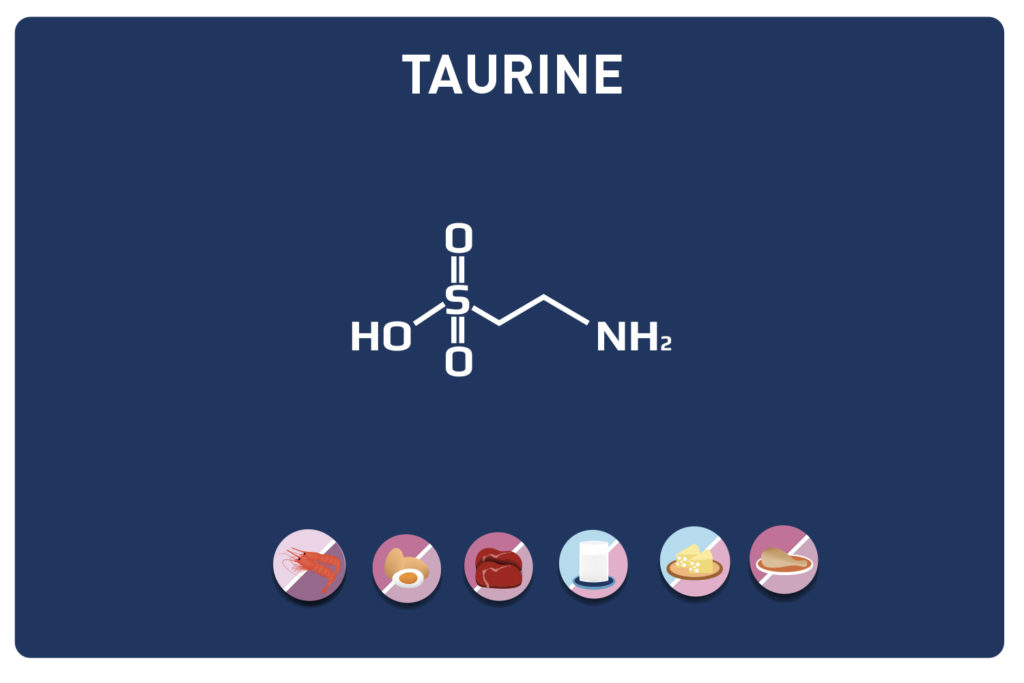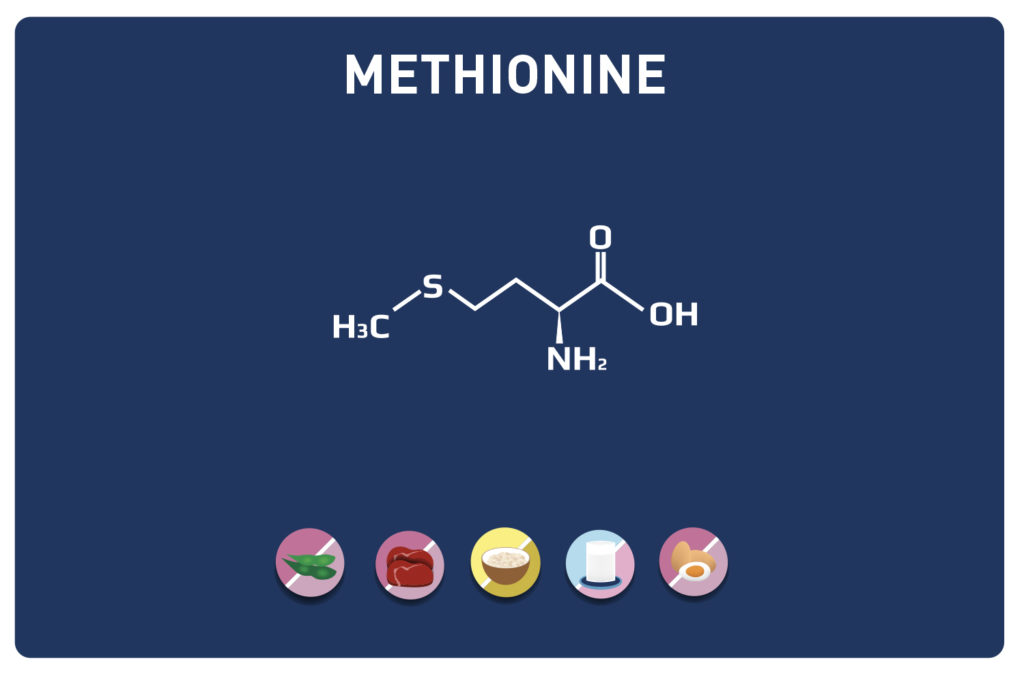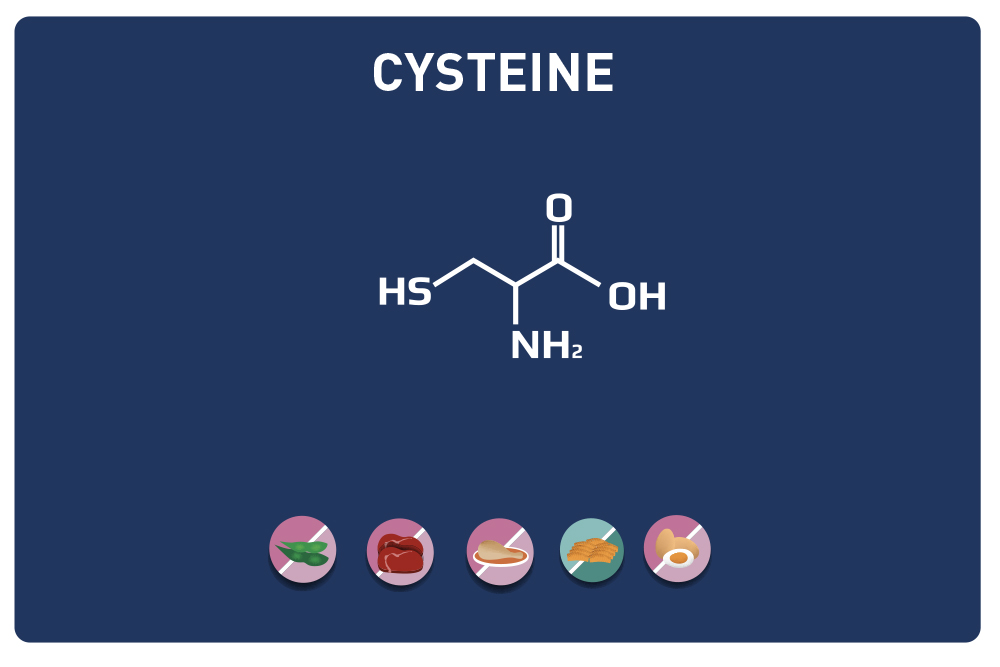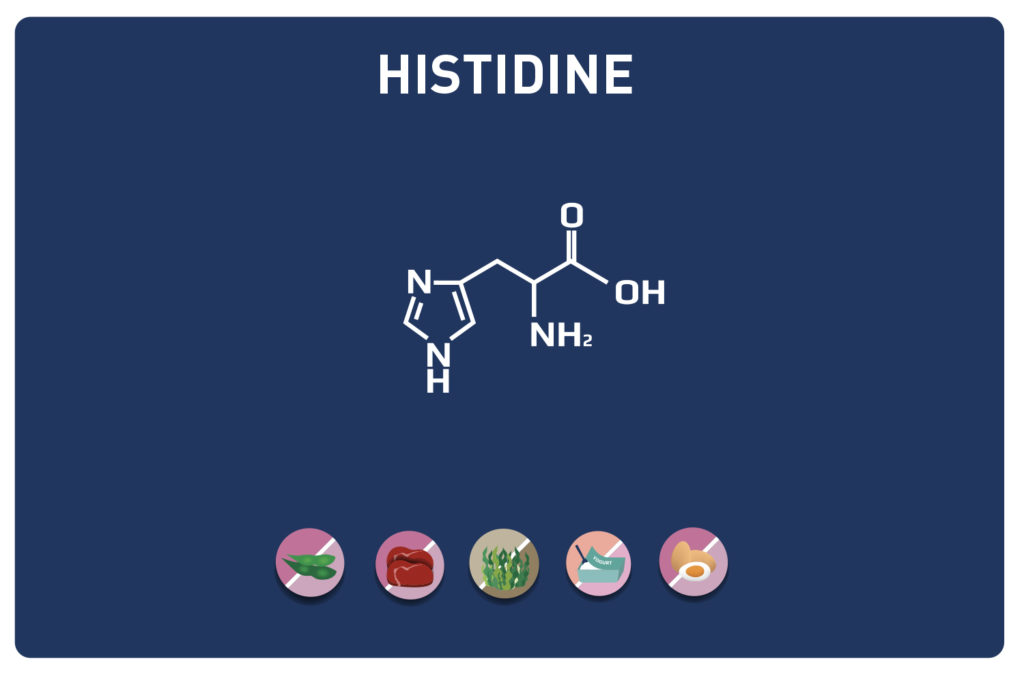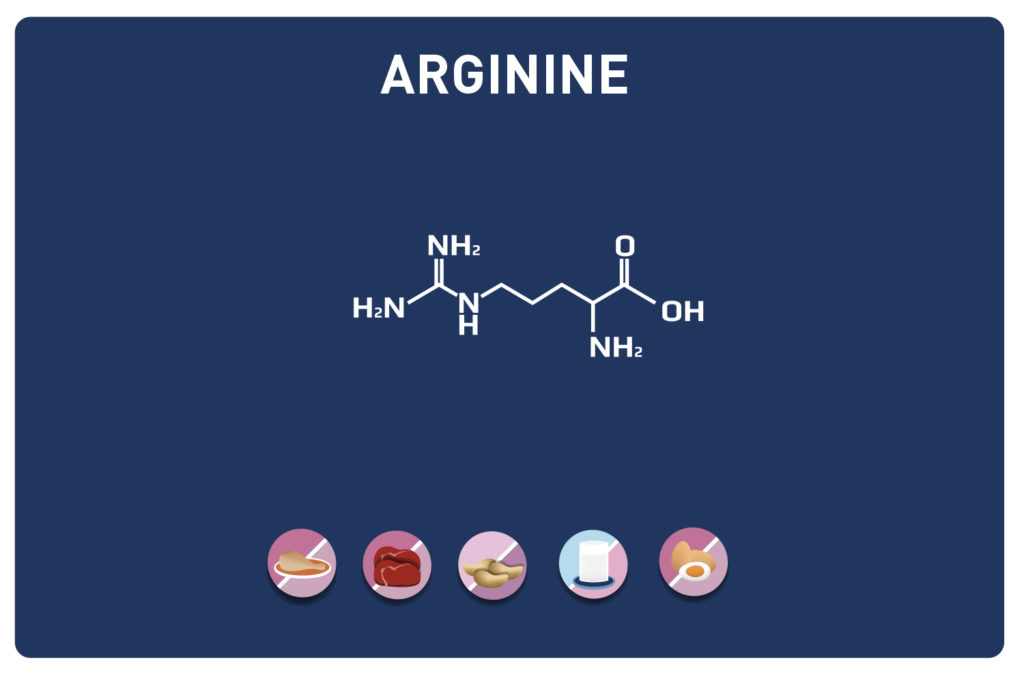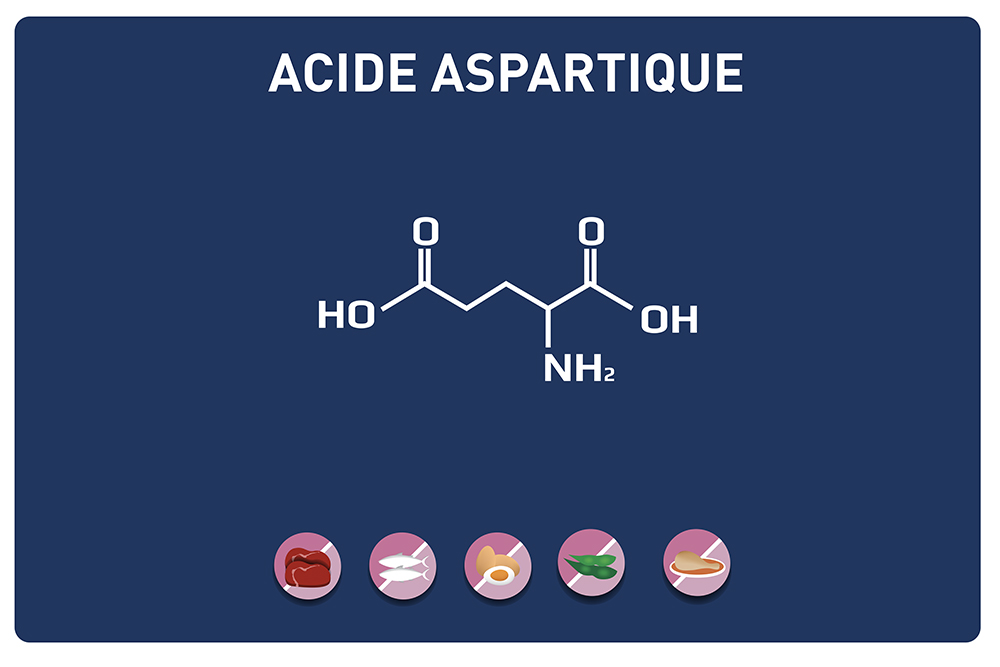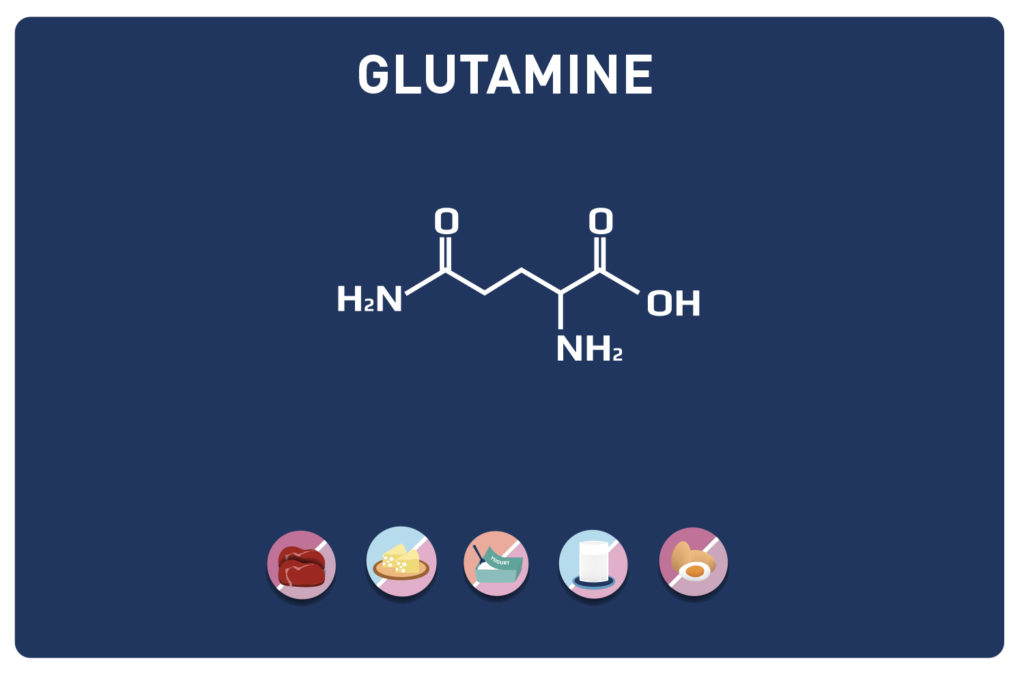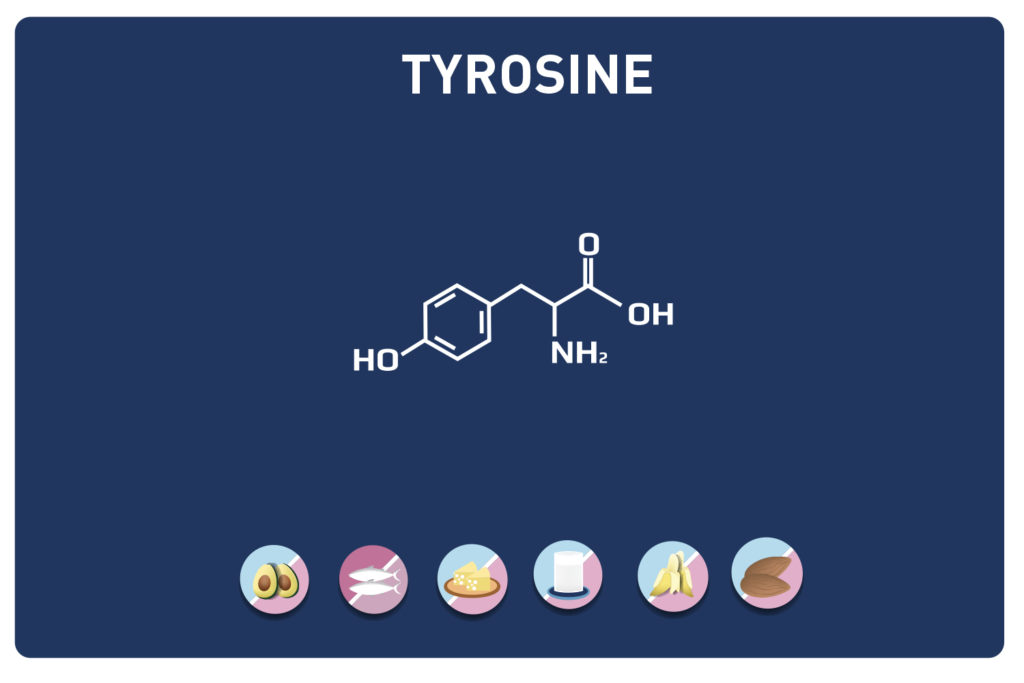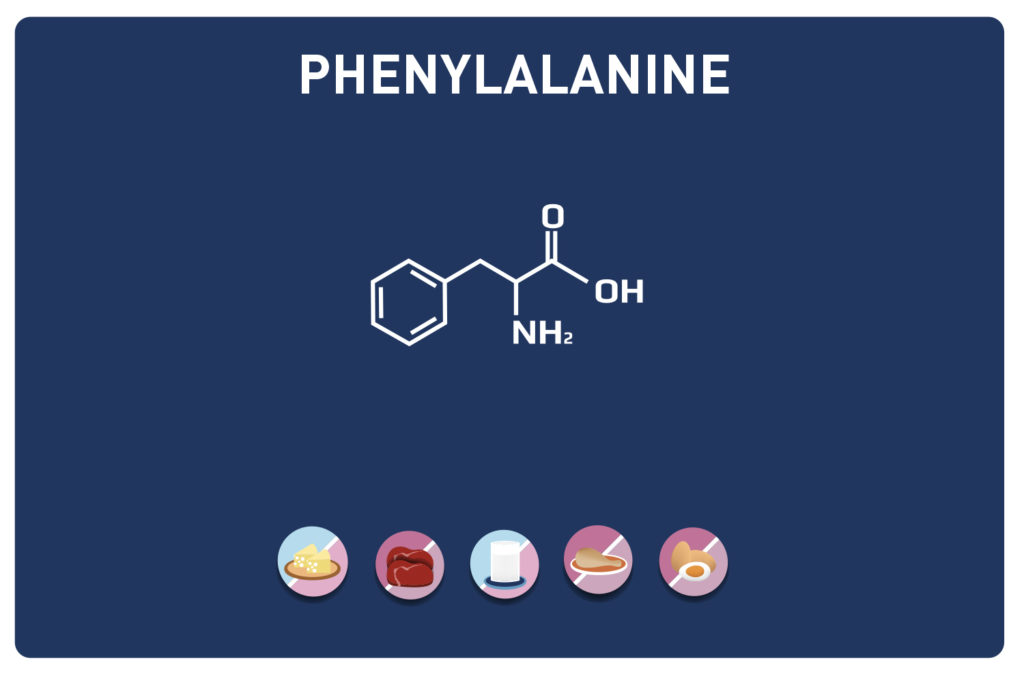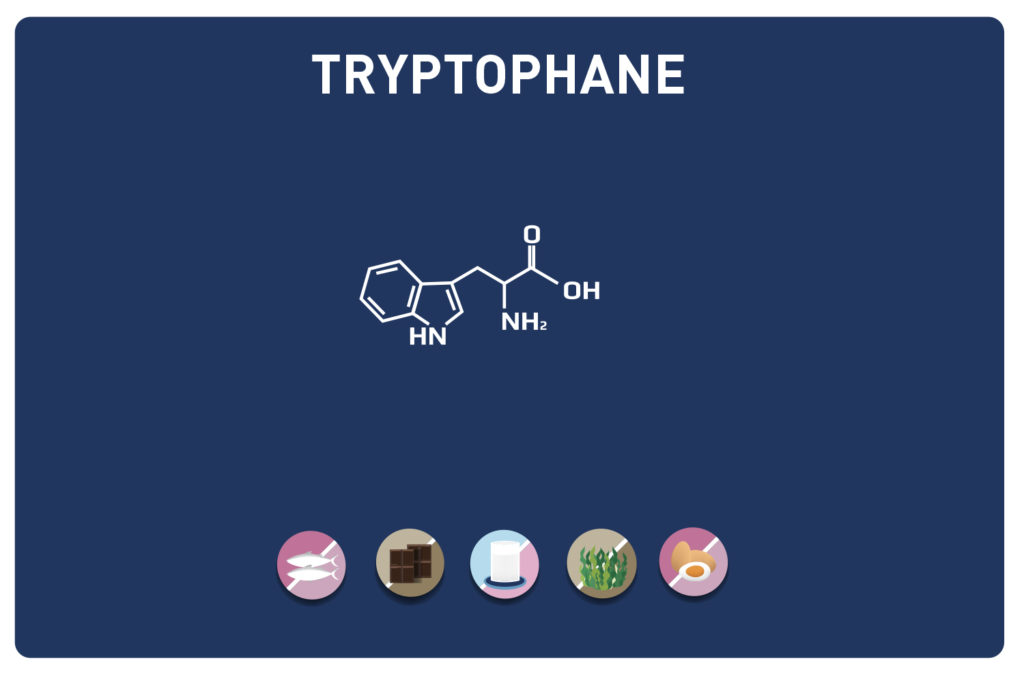Amino acids are molecules that make up proteins. Their assembly with peptides or with bonds ensures this composition.
What is the structure of amino acids?
Their name comes from the fact that they have an amine function (NH2) and a carboxylic acid function (COOH). They are distinguished by their side chain, R, which can be a simple
What are the functions of amino acids?
There are more than 100 amino acids, but only 22 are encoded by the genome of living organisms.
Each amino acid gives the protein specific chemical properties, and the sequence of assembly gives it a specific function.
The 22 biological amino acids are listed below:
- Alanine
- Arginine
- Asparagine
- Aspartate or aspartic acid
- Cysteine
- Glutamate or glutamic acid
- Glutamine
- Glycine
- Histidine
- Isoleucine
- Leucine
- Lysine
- Methionine
- Phenylalanine
- Proline
- Pyrrolysine
- Selenocysteine
- Serine
- Threonine
- Tryptophan
- Tyrosine
- Valine
And others that are special: citrulline, ornithine, taurine
Here are some examples of the roles related to some of these amino acids:
- Alanine: Alanine is one of the non-essential amino acids and can be synthesised by the human body. Alanine is one of the most abundant amino acids in the body. Alanine is converted by the liver into a source of energy and increases the sugar level in the blood. Alanine is a factor in the formation of white blood cells and is necessary for good health.
- Arginine: Arginine is an amino acid that is primarily involved in cell division, the healing and wound healing process, the removal of ammonia from the body, the proper functioning of the body's natural immune system, and the production of certain hormones, including growth hormone. From arginine, the body produces nitric oxide, which is a substance that helps blood vessels dilate, and creatine, a non-essential nutrient that is related to the development and function of muscle tissue.
- Asparagine: In the human body, the main role of asparagine is to contribute to the proper growth and functioning of the brain. Scientific experiments have shown the effects of a lack of this amino acid in nursing bitches and their puppies. A mother's diet lacking this amino acid, even partially, had negative effects on the brain development of the puppies being tested, including stunted growth and low myelin levels. As a reminder, myelin is a substance in the spinal cord that is responsible for the defence of nerve fibres.
- Aspartate or aspartic acid: aspartic acid is not an essential amino acid because the human body can produce it from oxaloacetate. It is a metabolite of the urea cycle and contributes to gluconeogenesis, as well as to the production of inosine, a precursor of nitrogenous bases. Aspartic acid is also a neuromediator, but not as potent as glutamate.
- Cysteine: Cysteine is not an essential amino acid as it can be synthesised by the body from serine and methionine. It contributes to the synthesis of melanin. Cysteine is involved in the formation of disulphide bridges between two sulphur atoms in the same protein or in two adjacent proteins.
- Glutamate or glutamic acid: Glutamic acid is a non-essential amino acid and can therefore be synthesised by the human body, but often in small quantities. It is therefore essential to supply it via the diet. Glutamate is also one of the most important and active neurotransmitters in the brain. It is also used as a food additive (E621) in the form of monosodium glutamate.
- Glutamine: Glutamine is an amino acid known for its role as a substrate for protein synthesis. This means that it is required for skeletal muscle contraction during training and without it, exercise may be limited or even ineffective.
- Glycine: Glycine is a non-essential amino acid as it is produced from serine by the body. Not only does it make up proteins, but glycine also has other important roles such as being a neuromediator that acts at the synapses in the brain, but also being a precursor to many porphyrin molecules).
- Histidine: a precursor of histamine, histidine contributes to the production of histamine, which in turn has an essential role in good arterial health. The formation of red blood cells is ensured by the presence of ample amounts of histidine in the human body, it is also important for the synthesis of haemoglobin.
- Isoleucine: Isoleucine allows the muscles to recover after a long physical effort and to keep them in shape. The muscles use isoleucine as a source of energy. Isoleucine also supports the transport of red blood cells, and therefore oxygen, throughout the body. It also helps to regulate blood sugar levels. It is found in dried vegetables and fruit, mushrooms, wholegrain cereals, etc.
- Leucine: this amino acid can also act as a source of energy for the muscles during an effort such as weight training. In this way, it will keep your glycogen reserve as it will be consumed before the carbohydrates. In case of carbohydrate deficiency due to a reduced calorie diet, leucine can be very useful. In fact, when dieting or even building up mass, leucine can be taken all year round.
- Lysine: Lysine is an essential amino acid, the human body cannot produce it and must be obtained from food. It is found mainly in muscles and has many biological functions such as contributing to bone growth, collagen and antibody production, and carbohydrate metabolism. It is chemically similar to arginine, another amino acid, with which it competes in the human body.
- Methionine: Methionine protects the liver and ensures the production of proteins in the best conditions. This amino acid is used extensively by sportsmen and women, but also for its antioxidant properties, and is full of good surprises.
- Phenylalanine: Phenylalanine has many virtues and effects on the human body. It is especially involved in the nervous system and the production of neurotransmitters.
- Proline: Proline is an amino acid that can be produced by the human body but it is essential to provide enough of it through the diet as it contributes to the metabolism of collagen which is essential for the integrity of joints, tissues and tendons.
- Pyrrolysine: Pyrrolysine (Pyl or O) is a rare amino acid, which is a component of most enzymes.

